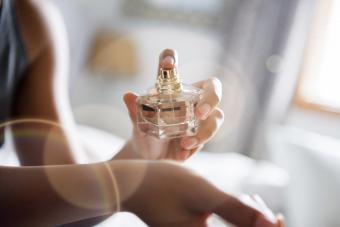
While applying your makeup, the final swipe of blush is the ultimate finishing touch for the perfect youthful flush. When applied correctly, cheek color provides a natural glow to the skin and completes your face.
Different Types
As with many cosmetics products, blush arrives in a variety of forms, including gels, creams and powders. Which is the right type for you? It will depend on your skin type; for example, gels work best for younger girls with flawless skin. Powders are most effective for normal, combination, and oily skin, while creams are best for dry skin. If you have oily skin, cream versions may add too much shine. However, creams can look impeccable and have great staying power if used with a light layer of loose powder, followed by another layer of powder blush.
The Proper Tools
Unfortunately, the brush provided with most products is not very useful for application. Even the best products will not be as effective if they are not applied with a quality brush. Look for natural bristles and a tapered brush for the best possible application. Employing a great brush, you can apply blush flawlessly, allowing a perfectly blended look.
If using a cream, all you need are your fingertips to get the job done. Use your middle finger to dab on the product, and then blend well with your middle and ring fingers.
Choosing the Right Rouge Color
Determining the shade that is most suitable to your skin tone and color can be confusing. While blush should be subtle, it shouldn't get lost in the mix. It also shouldn't be so dramatic that you look like you've applied clown makeup!
Try for a shade that ties your whole makeup look together by complementing your shadow and lipstick. Keep cheek colors in the same "family" as other makeup shades for consistency. For example, choose all of your makeup in warm undertones or all shades that have cool undertones. Blush can also be matched to lip color; for example, use a pink shade with pink lipstick, or a bronze shade for brown-toned lipstick.
InStyle magazine suggests selecting a color to best match your cheeks after you have exercised or been in the cold. This is your natural glow. Giving your cheeks a few quick taps will temporarily recreate this inherent blushing color. Then try out a few different shade combinations at the makeup counter to discover the best equivalent.
Application Tips

To find the best starting point for application, smile, then apply blush from the apple of your cheek along your cheekbone to the hairline. Additional application tips include:
- Apply a good foundation to even skin tone and provide a smooth base.
- Ensure adequate lighting during application, either next to the natural light of a window, or with bright white bulbs in the bathroom to approximate daylight. Dark lighting may cause you to apply too much makeup.
- After applying blush, a layer of translucent powder can be applied to set the look and maintain staying power.
- If you over-apply or have chosen a color that is too dramatic, a light dusting of powder can tone down the color, creating a more natural appearance.
- Avoid dated looks, such as using contouring colors to create more defined cheekbones.
- Apply blush last, as a finishing touch. Having the eye makeup and lipstick in place will help you best determine how much cheek color to apply.
Lifespan of Blush
Makeup doesn't last forever, although we are all guilty of having a few oldies in our makeup bag. Blush should be thrown out after six months to prevent any bacterial problems. Brushes should be kept clean as well to prevent the growth of bacteria. Quickly clean your brush with makeup remover or a baby wipe regularly.







